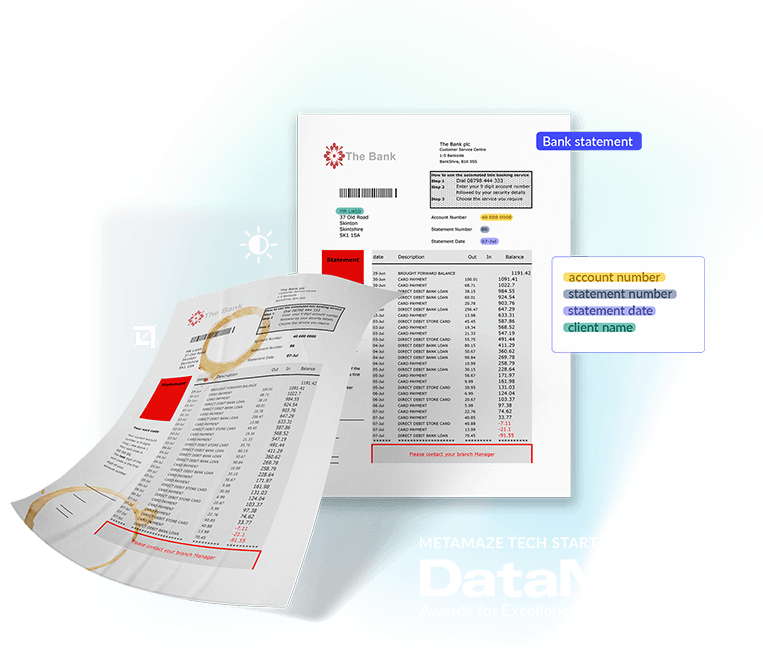Adaptive IDP vs Regular IDP: Intelligent Document Processing for the Modern Age
In an era where change is the only constant, a new variant of IDP is clearly needed – Adaptive IDP. Discover the differences in this blog.
As we hurdle through the LLM age, businesses are perpetually looking for ways to streamline operations and maximize efficiency. One solution that has found its place in the heart of modern businesses is Intelligent Document Processing (IDP). But in an era where change is the only constant, a new variant of IDP is clearly needed – Adaptive IDP.
The significant difference between Regular IDP and Adaptive IDP solutions lies in their ability to learn and adapt quickly. While Regular IDP often performs admirably out-of-the-box, it’s static performance or slow learning can become a sticking point. It continues to repeat the same mistakes and lacks the capacity to learn from them, which can result in a painstakingly slow training loop, sometimes taking weeks or even longer.

In contrast, Adaptive IDP quickly learns from errors, allowing businesses to avoid the repetitive cycle of making the same mistakes over and over again. More impressively, Adaptive IDP is multilingual and can adapt to new languages, countries, layouts, and external data changes, making it a more flexible and globally viable solution.
Finally, the potential of Adaptive IDP goes beyond merely learning from mistakes. It empowers businesses to add new document types and fields as needed. This level of flexibility is a breath of fresh air, especially when compared to the rigid structures of Regular IDP that make it hard or even impossible for users to add custom fields or document types.
Receive a pdf of this article in your mailbox.
Benefits of Adaptive Intelligent Document Processing
Benefit 1: Learning fast means higher automation rates
The most important aspect of any IDP solution is its automation rate in production settings. While Regular IDP solutions often deliver good performance out-of-the-box, they tend to stagnate at this level, are slow to learn, or even stop improving at all.

Adaptive IDP, on the other hand, starts at a medium-to-good performance level, but continuously learns from new edge cases and therefore rapidly improves to deliver excellent performance in production. This vastly outperforms static solutions very quickly, with or without a fitting base model:
- Where a base model is available, you get out-of-the-box accuracy PLUS fine-tuning to your specific data, quickly outperforming static solutions.
- Where a base model is not available, the model learns incredibly quickly via a process called “few-shot learning”.

Benefit 2: Flexibility in fields, documents, or languages
You are unique. And companies worldwide have an ever-changing list of information they want from documents that don’t fit the mould. But regular IDP often forces you to use:
- A fixed set of supported fields - e.g. 27
- For a fixed set of supported document types
- For a fixed set of languages
An Adaptive IDP solution should allow you to train your own custom models, even if the set of fields to extract doesn’t match.
Some Regular IDP solutions will allow you to create a custom model from scratch, but that means you also have to annotate from scratch and lose the accuracy of the already supported entities! Clearly, that’s not what a good Adaptive IDP solution should look like. You want the flexibility to pick your own entities and if they are known, just use whatever is already good.

Metamaze achieves this by the hyper-flexible Hydra model which allows you to mix and match training data. For more technical details, see the Hydra blog post.
Receive a pdf of this article in your mailbox.
Benefit 3: Have all info and tools to improve your models
Peter Drucker is famous for his axiom “If you can’t measure it, you can’t improve it“. The same is true for AI models: to find how you can improve the data, you need deep insights into:
- Current model performance
- Advanced model analytics (click to read more)
- Production evaluation results
If you know which fields or document types are underperforming, you can make targeted improvements.
A data-centric approach to modeling is crucial, and an Adaptive IDP solution should continuously help you with improving your training data by:
- Suggesting fixes to annotation mistakes
- Suggesting which documents to annotate
- Creating custom QA tasks based on specific entities, annotators, …

When you have deep access to all relevant statistics and have improved your training data, the only thing you then need is the ability to experiment with different base models, or training specific models on different subsets of your training data until you get the best working model.
Summary
In summary, while Regular IDP has its merits, Adaptive IDP is the new kid on the block, offering businesses a level of flexibility, learning, and adaptability that’s in sync with the dynamic digital age. It’s not just about processing documents anymore; it’s about doing it intelligently, adaptively, and with a view to the future.
Receive a pdf of this article in your mailbox.
Table of Contents
Request a Metamaze demo
Learn how Metamaze can help you automate any document and email in your organization. Book a demo with one of our experts and we’ll give you a quick tour of our product.

